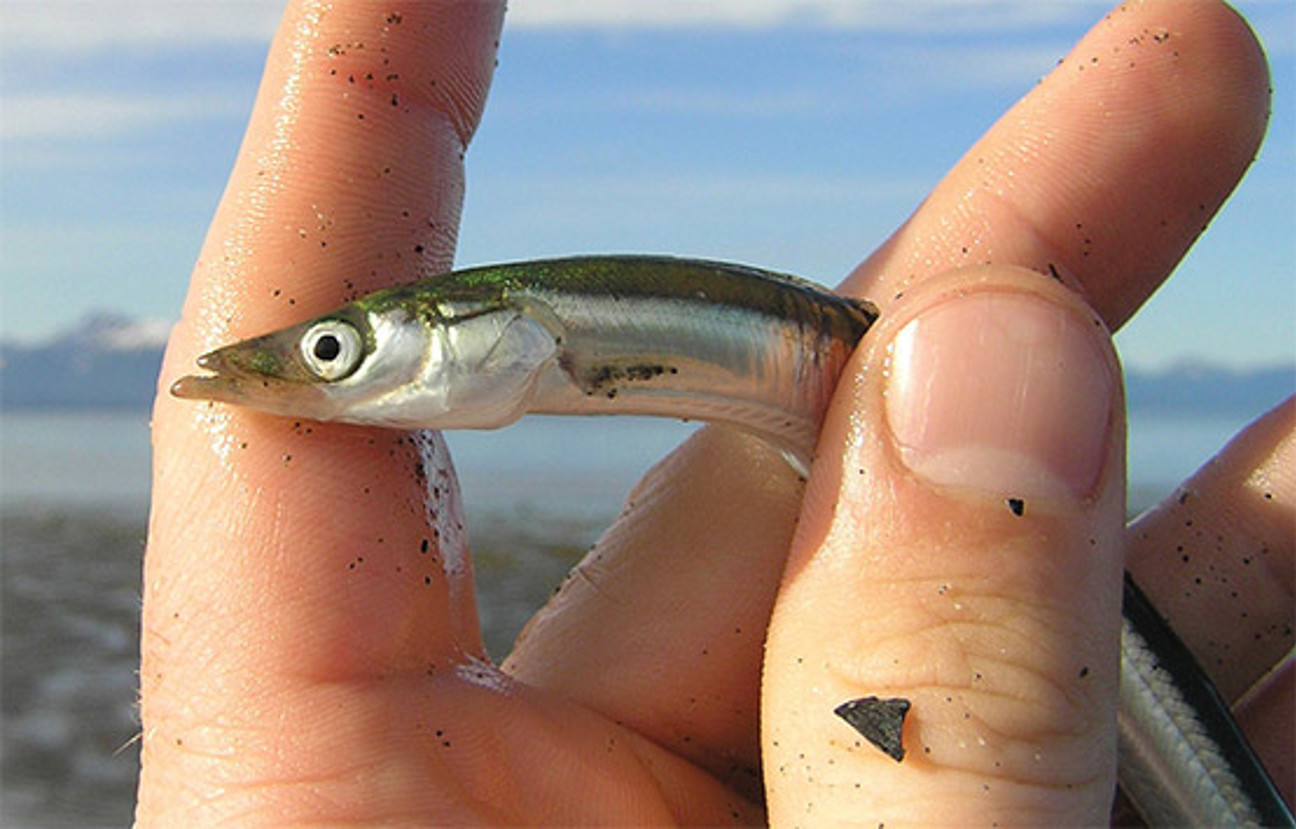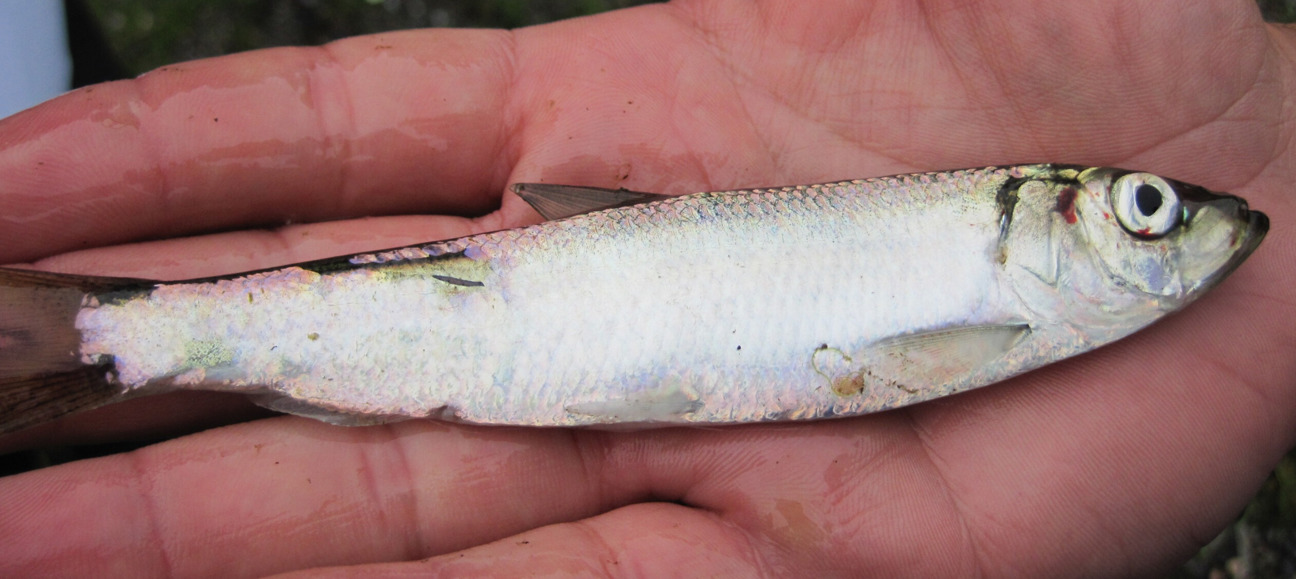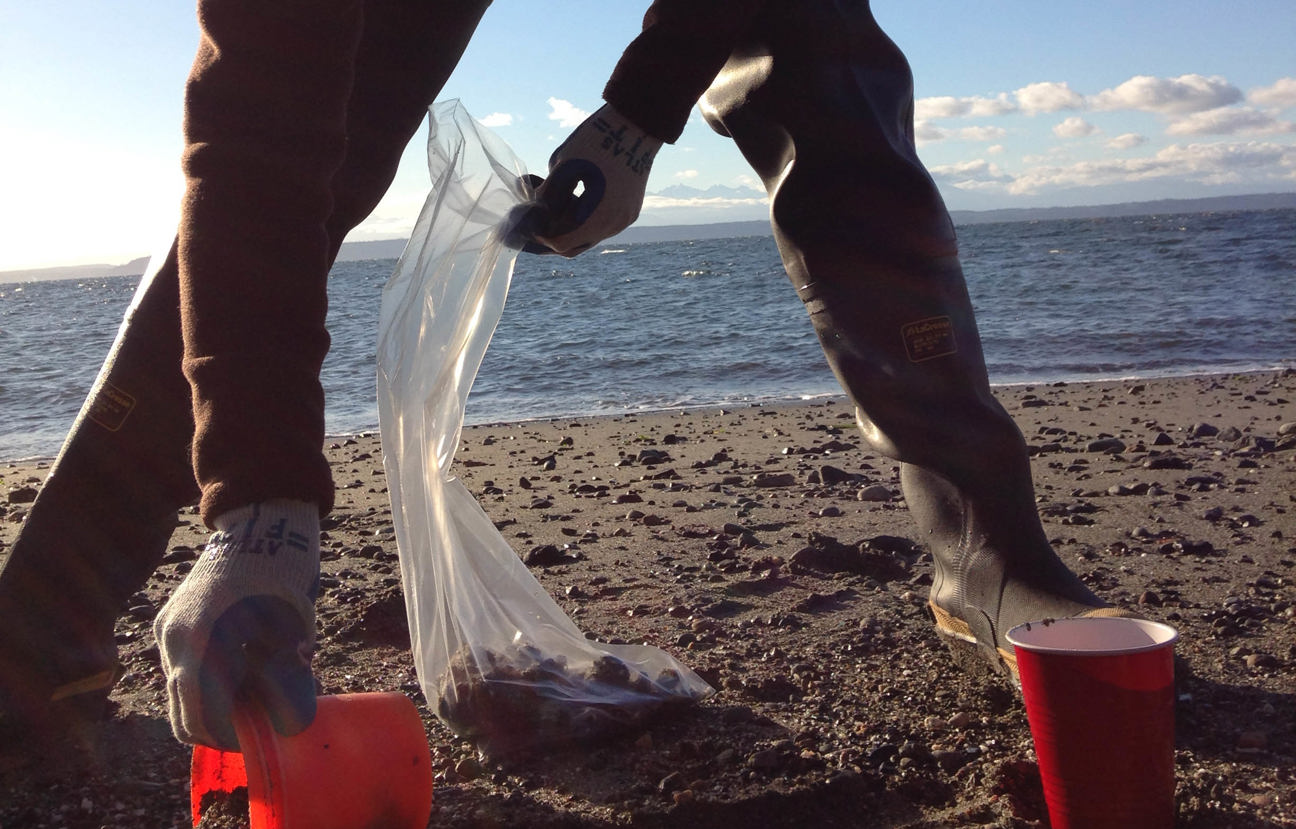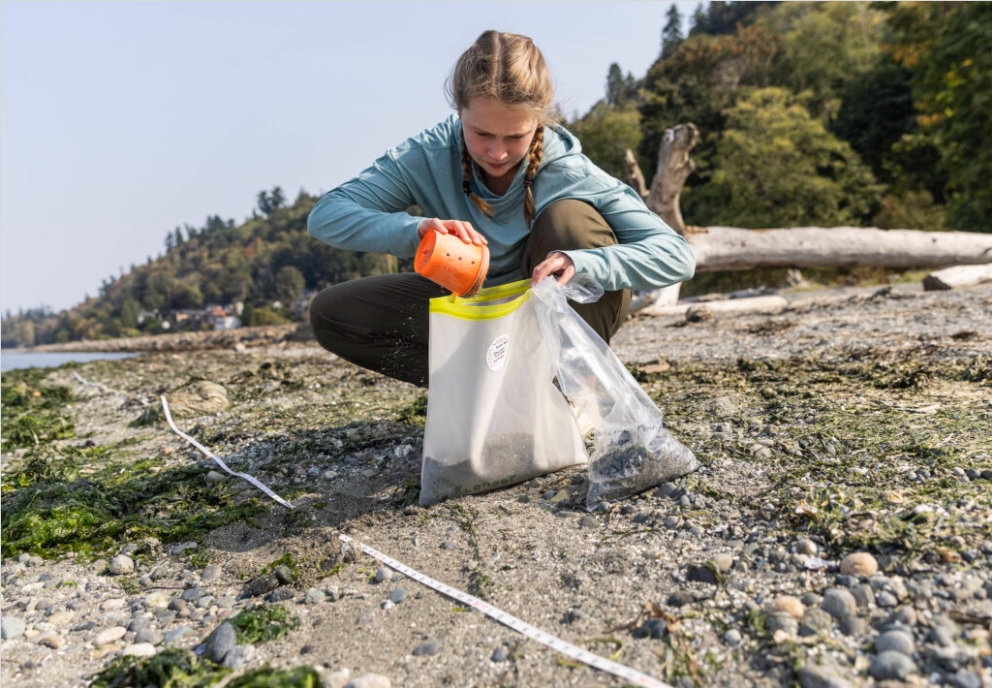Forage Fish Spawning Surveys

Holding a Pacific Sand Lance. Photo: Sean Rooney

Holding a Surf Smelt.
What Are Forage Fish?
Forage fish are small, schooling fish common in the Puget Sound. Forage fish are not a phylogenetic group, but rather an ecological group. They are extremely important links in the marine ecological food web.
Forage fish are best described as the middle link in the marine food web. These small fish feed on microscopic, primary-producers like phytoplankton. In turn, forage fish and their eggs are important menu items for birds, seals, fish (including salmon), and other animals. Being this source of food for other creatures is why the ecological group get its "forage" name. With such a key role both up and down the food chain, forage fish are considered to be indicators of health and productivity of marine ecosystems.
Forage fish are obligate spawners in the nearshore. They deposit their eggs is vast quantities on nearshore vegetation and beaches. The nearshore also acts as a nursery for juvenile forage fish, which take refuge and feed in the shallow, vegetated waters.
Three forage fish species of concern in Snohomish County are:
- Surf smelt (Hypomesus pretiosus) — Grows up to 9 inches long. Olive green dorsal, silver or yellow band on sides. Adipose fin. Small scales.
- Pacific sand lance (Ammodytes hexapterus) — Grows up to 8 inches long. Gray to green dorsal, silver sides. Large dorsal fin. Elongated pointed body. No adipose fin. Scales almost invisible.
- Pacific herring (Clupea harengus pallasi) — Grows up to 9 inches long. Bluish green to olive dorsal with silvery sides. No adipose fin. Large scales on body; none on the head and tail. The largest stock is in the Cherry Point area (northern Puget Sound).
For more information on forage fish, click here to view our forage fish factsheet.
Survey Protocols
Snohomish County Marine Resources Committee (MRC) participates in monthly forage fish spawning surveys along the Snohomish County shoreline.
Forage fish spawning surveys use Washington Department of Fish and Wildlife’s (WDFW) protocols and focus on two species, surf smelt and Pacific sand lance, which lay eggs on intertidal sand-gravel beaches in the nearshore environment. In order to sample for the presence or absence of eggs, sediment samples are taken along a 100 foot pre-defined transect location. Volunteers collect sand from the top 1-2 inches of the beach, where eggs would be deposited. In total, about 1.5-2 liters of sand is collected along the transect. Click here to see the full protocol and sample directions explanation.
The sand that is collected is then processed. The first step in processing the sample is to sieve the sample through progressively finer sieves (4 mm, 2 mm, and 0.5 mm mesh). Only the material collected in the 0.5 mm sieve is retained for further processing. The condensed material collected in the 0.5 mm sieve is added to a hydrocyclone device consisting of a circular bowl and a recirculating electric water pump to create a vortex that concentrates the light material. This device is called the “blue vortex.” The light material is collected and retained for laboratory analysis (examination of material by microscope) to identify and count the eggs.
Survey Results
Since 2011, the MRC has helped take over 700 forage fish samples, and that number continues to grow every month as we take more samples! The results of the ongoing surveys provide up-to-date forage fish spawning information to Snohomish County and the Washington Department of Fish and Wildlife. Results from the MRC’s survey can be found of this WDFW map, which displays sand lance, smelt, herring spawning areas, herring pre-spawner holding areas, and the forage fish spawning survey beaches in Washington State.
Snohomish County has also used the data from the MRC’s surveys to evaluate the effectiveness of restoration projects which have occurred on forage fish spawning habitat within the County. An example of this is a report completed by Natural Resources Consultants to evaluate the forage fish surveys associated with the Nearshore Restoration Project between 2011 and 2017, and is available for download here. The data has also been used for the Snohomish Railroad Grade Beach Nourishment Study, and more information on how the data was used can be found on the MRC Nearshore Restoration Project page.
To see an example of what monitoring each season looks like, see the 2025 summary report.

Gathering the sand samples that will be analyzed for the presence or absence of forage fish eggs.

